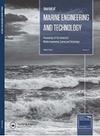可视化燃烧监测和数学模型的移动镁颗粒在水蒸气流
IF 4.4
4区 工程技术
Q1 Engineering
Journal of Marine Engineering and Technology
Pub Date : 2023-05-22
DOI:10.1080/20464177.2023.2214985
引用次数: 1
摘要
镁作为一种潜在的氢反应金属颗粒燃料,由于其优异的点火和燃烧特性而受到广泛关注。本文设计了一种激光点火测试系统,用于对不同平均直径的运动镁颗粒进行可视化燃烧监测。记录了燃烧图像,分析了颗粒直径对燃烧现象和燃烧时间的影响。统计结果表明,100µm、150µm和200µm镁颗粒的平均燃烧时间分别为4.5±2.5、15.2±7.9和31.7±17.9 ms。此外,建立了准稳态、非均相、扩散受限的燃烧过程数学模型。模型中存在火焰面,并将粒子表面与无穷远处的气相场划分为内区和外区。同时考虑了颗粒相对运动对传热和外区组分的影响。本文章由计算机程序翻译,如有差异,请以英文原文为准。
Visualised combustion monitoring and mathematical modelling for moving magnesium particles in water vapour flow
Magnesium has received significant attention as a potential hydro-reactive metal particle fuel due to its superior ignition and combustion characteristics. In this work, a laser ignition testing system was designed for visualised combustion monitoring of moving magnesium particles with different average diameters. Combustion images were recorded and the effect of particle diameter on the combustion phenomena and combustion time were analysed. The statistical results show that the average combustion times are 4.5 ± 2.5, 15.2 ± 7.9, and 31.7 ± 17.9 ms for the magnesium particle fractions of 100, 150, and 200 µm, respectively. Moreover, a quasi-stable state, heterogeneous, and diffusion limited mathematical model was developed to describe the combustion process. In the model, a flame surface exists and divides the gas phase field between the particle surface and infinity into an internal zone and an external zone. Effects of particle relative movement on the heat transfer and external zone components were also considered.
求助全文
通过发布文献求助,成功后即可免费获取论文全文。
去求助
来源期刊

Journal of Marine Engineering and Technology
工程技术-工程:海洋
CiteScore
5.20
自引率
0.00%
发文量
0
审稿时长
>12 weeks
期刊介绍:
The Journal of Marine Engineering and Technology will publish papers concerned with scientific and theoretical research applied to all aspects of marine engineering and technology in addition to issues associated with the application of technology in the marine environment. The areas of interest will include:
• Fuel technology and Combustion
• Power and Propulsion Systems
• Noise and vibration
• Offshore and Underwater Technology
• Computing, IT and communication
• Pumping and Pipeline Engineering
• Safety and Environmental Assessment
• Electrical and Electronic Systems and Machines
• Vessel Manoeuvring and Stabilisation
• Tribology and Power Transmission
• Dynamic modelling, System Simulation and Control
• Heat Transfer, Energy Conversion and Use
• Renewable Energy and Sustainability
• Materials and Corrosion
• Heat Engine Development
• Green Shipping
• Hydrography
• Subsea Operations
• Cargo Handling and Containment
• Pollution Reduction
• Navigation
• Vessel Management
• Decommissioning
• Salvage Procedures
• Legislation
• Ship and floating structure design
• Robotics Salvage Procedures
• Structural Integrity Cargo Handling and Containment
• Marine resource and acquisition
• Risk Analysis Robotics
• Maintenance and Inspection Planning Vessel Management
• Marine security
• Risk Analysis
• Legislation
• Underwater Vehicles
• Plant and Equipment
• Structural Integrity
• Installation and Repair
• Plant and Equipment
• Maintenance and Inspection Planning.
 求助内容:
求助内容: 应助结果提醒方式:
应助结果提醒方式:


